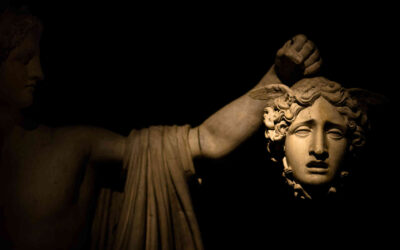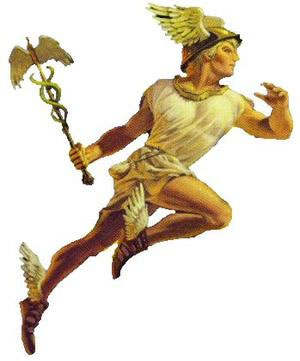Virgo, an earth sign of the mutable mode, is commonly associated with matters of health, and the necessary devotion to detail that is the sound management of the affairs of life. Virgo is a very unassuming sign, typically preferring to work behind the scenes, leaving the spotlight for other signs like Leo, Aries, and Sagittarius.
Astraea, the Goddess of Justice
The image of Virgo, as a constellation is most closely associated with the Greek goddess of justice, Astraea. Meaning ‘she of the stars’, Astraea was the daughter of Zeus and Themis. During the Greek “Golden Age”, when the gods walked openly among men, Astraea would sit in the company of common folk in the marketplace and urge them to obey nature’s laws. This immediately calls to mind the Virgoan sensitivity to nature’s laws, specifically the laws of health and nutrition. Again the association with the “common folk”, and not the exalted realms of the gods, links to the Virgoan dislike of pomp and circumstance, and a proclivity toward humility.
{mosimage}
Eventually Astraea ascended to the stars after the putridness of man’s increasing corruption assaulted her pure sensibilities. Yet again, this echoes a modern tendency for Virgo’s abhorrence of uncleanness and disorder, almost as a “turning of one’s nose.” As the goddess of justice, Astraea was a very stern punisher of crime. Justice, as a concept, deals with the mathematical exactness of the law of karma; and the Biblical injunction: “For verily I say unto you, Till heaven and earth pass, one jot or one tittle shall in no wise pass from the law, till all be fulfilled.” (Matt. 5:18)
Ancient Feminine Goddess Cults and the Use/Misuse of the Energies of The Base Chakra
The female goddess motif of Virgo/Astraea is very complex. The Summarian-Chaldean astrology (the civilizations predating Greek) called the constellation Ishtar, after their goddess of creation. Ishtar then becomes Ashtoreth of the Hebrews; which then becomes Aphrodite, the Greek goddess of procreation.
By the time we get to the Greeks, what is the essence of Virgo “splits” into two distinctly different feminine images: Astraea, and then Aphrodite. Astraea represented the discipline of nature, while Aphrodite represented the forces of nature uncontrolled in mortal love and passion.
The image of Virgo is distinctly feminine, and connects directly to the energies of the base of the spine chakra. It is in the base of the spine energy center, or "chakra"; that the energies of sex, are either used or misused.
The powerful energies of sex, naturally, are used to propagate the race. There comes a time, however, after all the children-making; that the energies need to start going UP. For the energies of sex to go up, the is necessitated a disciplining or curbing of the sex expression. For there to be a curbing of the sex expression, a sort of detachment from the "normal" carnal, or bodily-procreative (not meant to be referred to in a negative way) consciousness, in preference for a more "pure", or less-animalistic, state of consciousness. Aphrodite (or the Roman Venus) embodies the carnal/bodily consciousness; while Astraea embodies the discipline of the latter state of being.
The Concept of Virgin
There is a very obvious connection between the words Virgo and virgin. Originally, in the Greek and Hebrew, ‘virgin’ simply meant “unmarried or independent woman”, and not “sexually chaste” as in the modern connotation. In many of the feminine goddess cults of history, “virgins” were the temple prostitutes, after the image of their goddess, raising up men in an ancient form of “sex magic”—or so the writer presumes. “Virgin” as such was anything but sexually chaste. “Chaste”, at the time, merely implied sexual relations within the marriage bonds.
However controversial they are, these issues relate back to the white light of the base chakra; two different schools of philosophy as to how men and women should employ it. One is higher, one is lower.
Spica
The actual constellation of Virgo contains one of the brightest and most astrologically fortunate fixed stars, Spica (pronounced "spee-ka"). In the configuration, Spica is the sheaf of wheat held by the female goddess figure. Spica has also been called the Christ Child held in the arms of the Virgin Mother.
Spica gives honors and fame; it gives marked good influences for scientists, writers, artists, sculptors, and musicians. Spica also gives refinement and noble bearing; it indicates the ability to sublimate sexual energies upward to artistic and creative channels.
Spica has also been called “the Lonely One”, an attribution also made to the various avatars throughout the ages. In this case it is called lonely because there are no other stars in it immediate vicinity (as seen in ancient times, but with modern technology many more can be seen now in Spica’s vicinity).





















